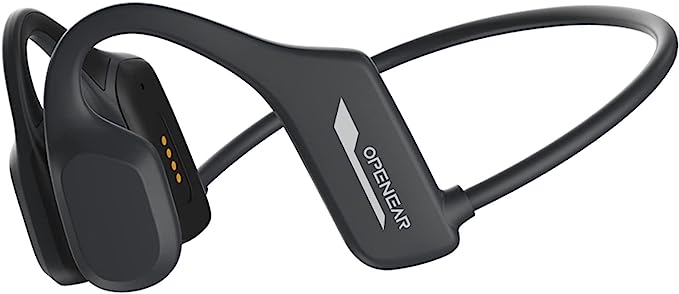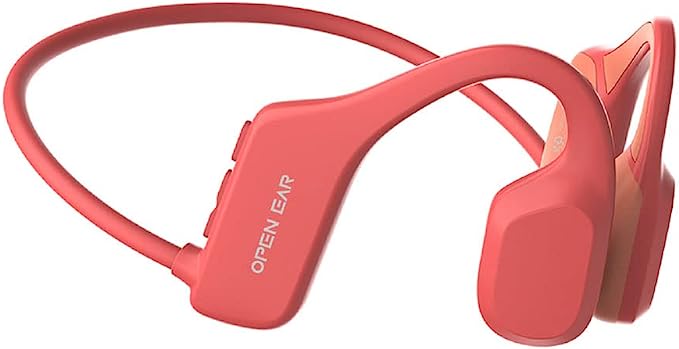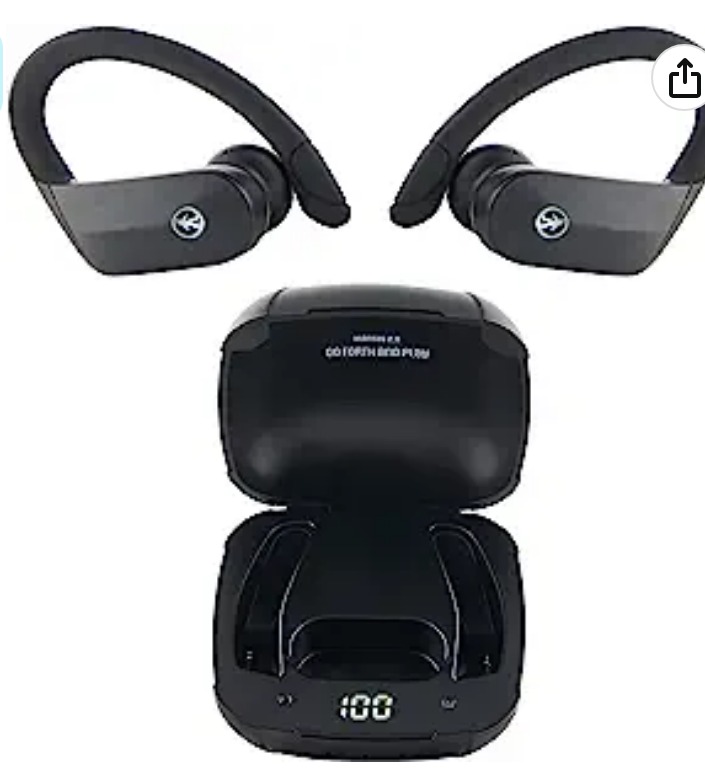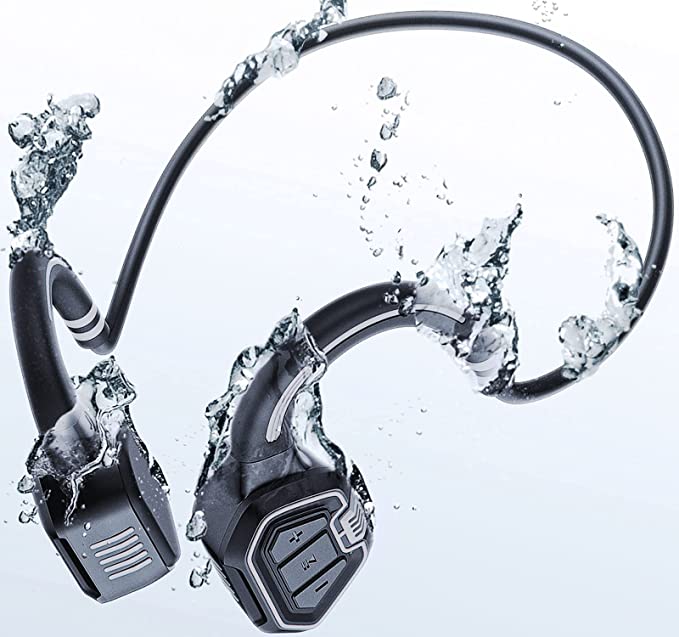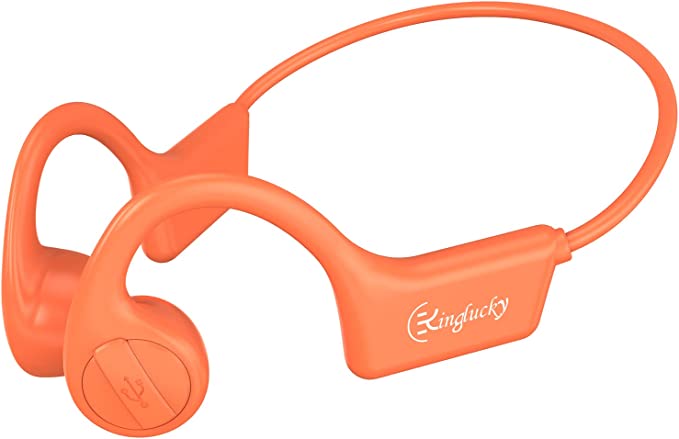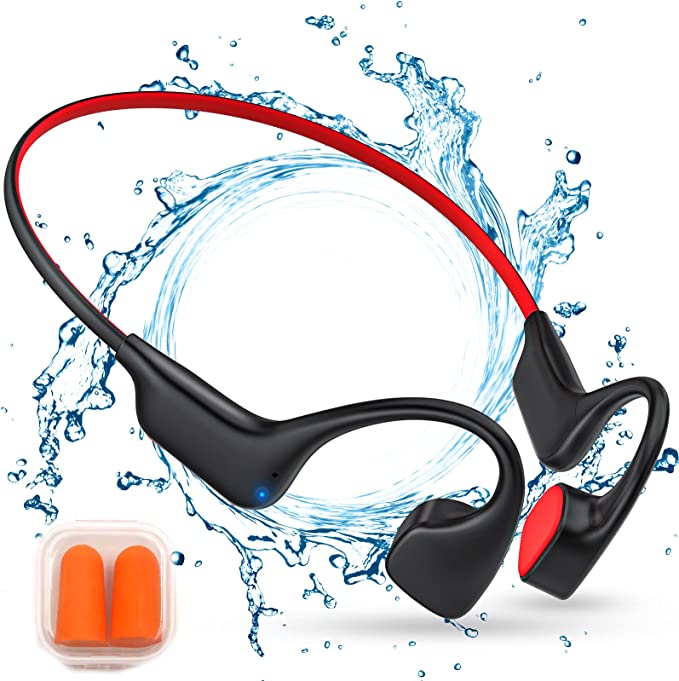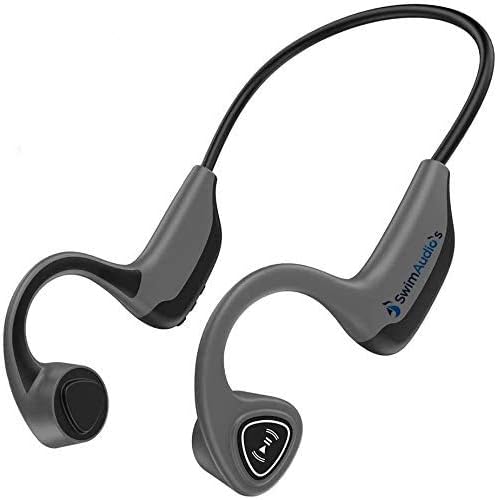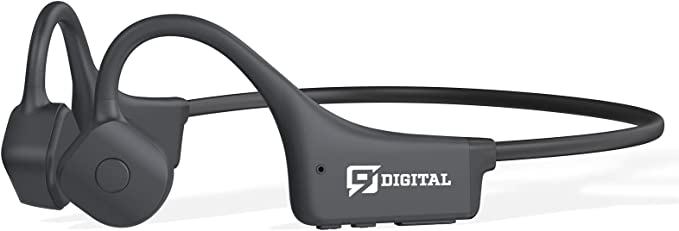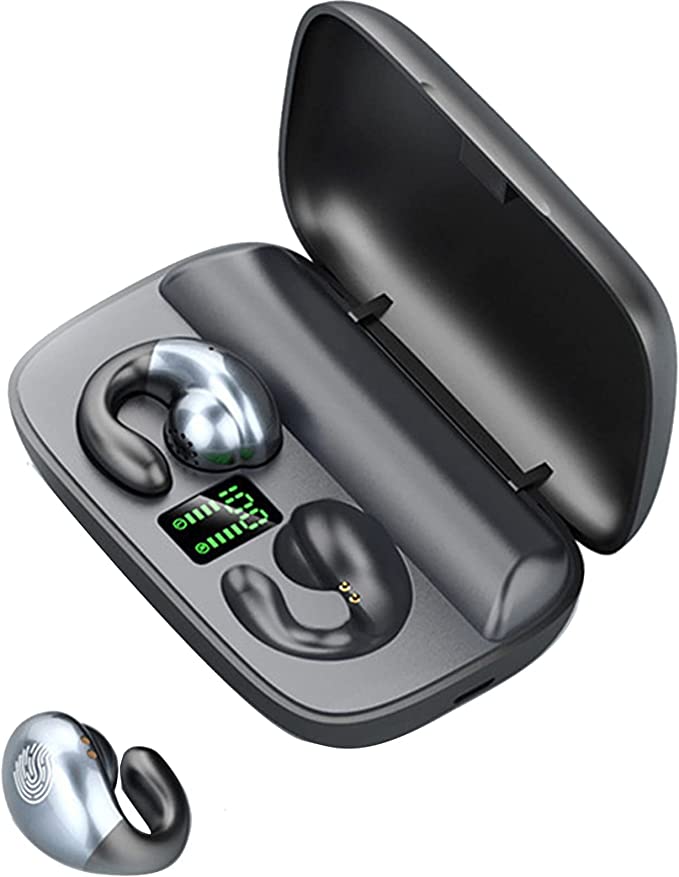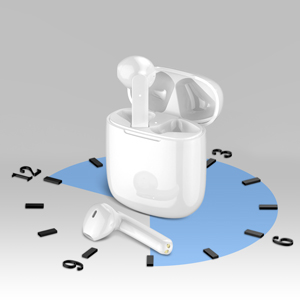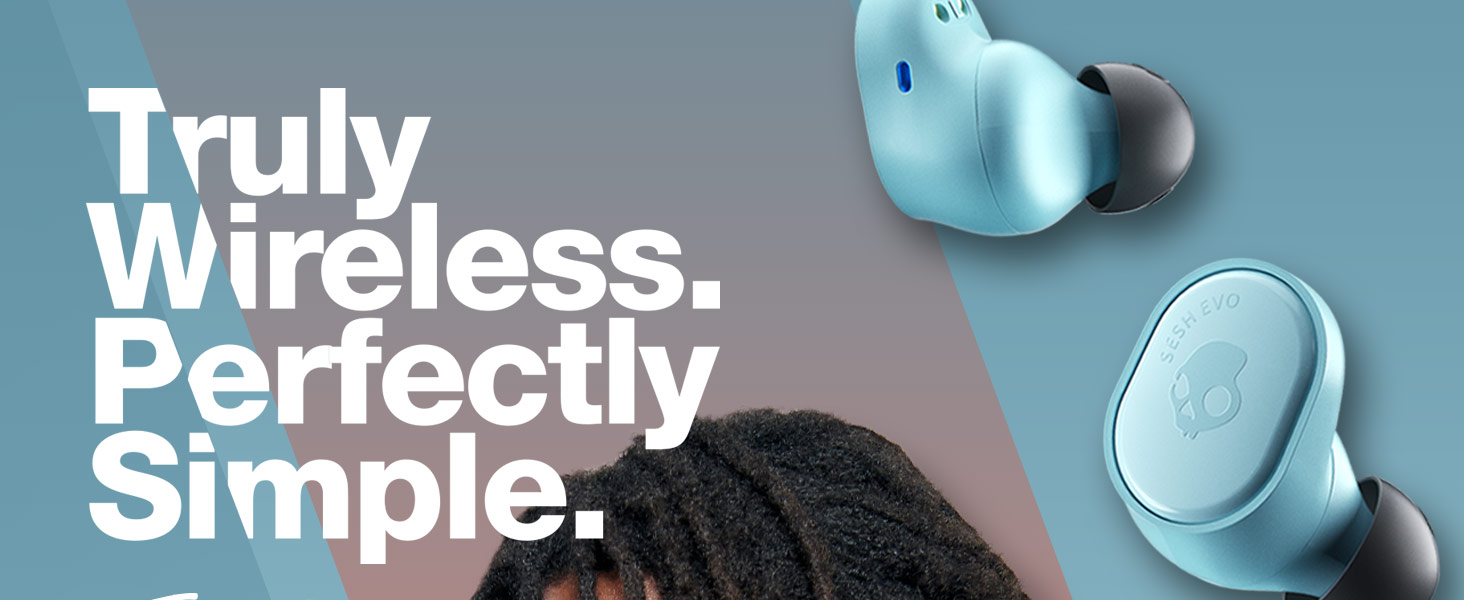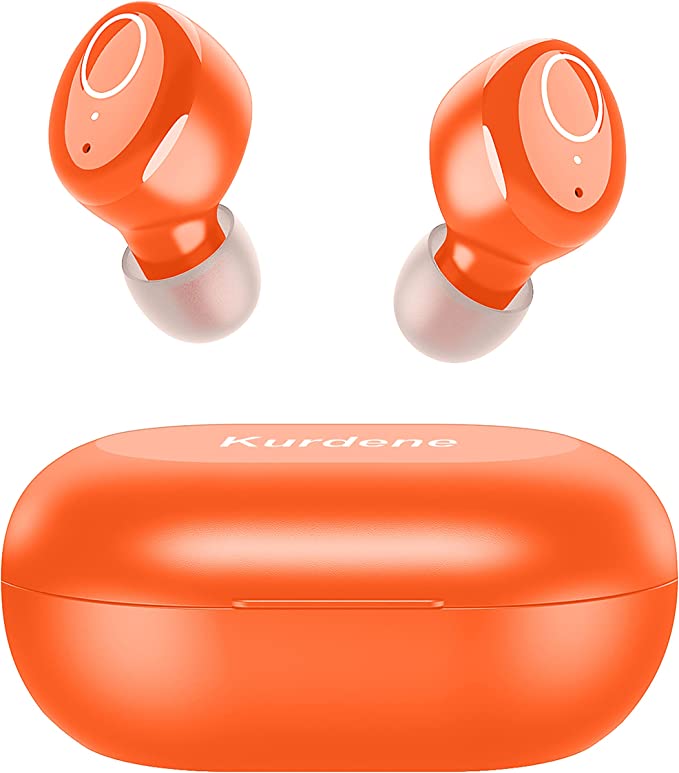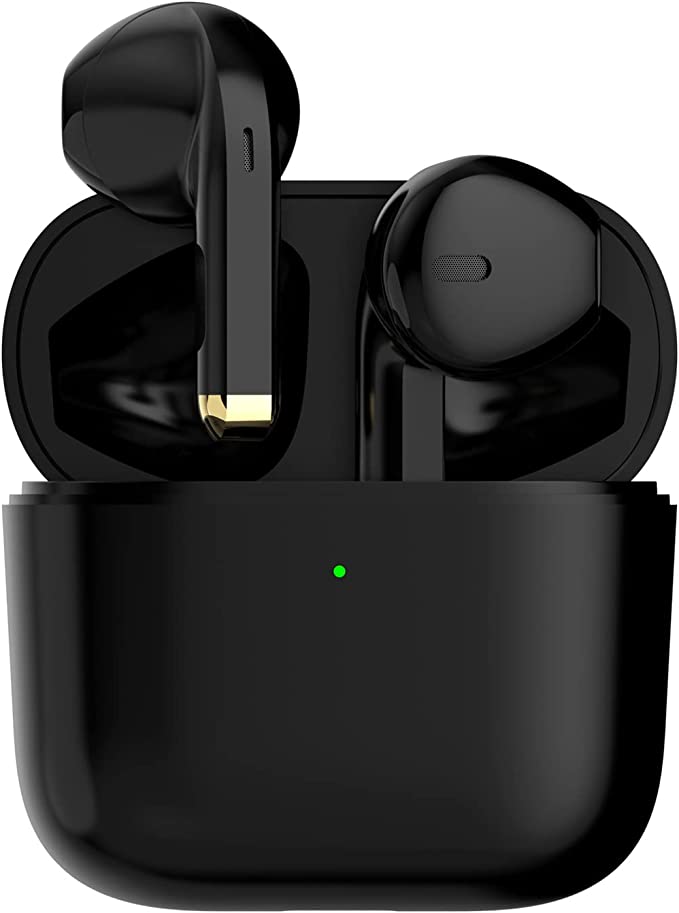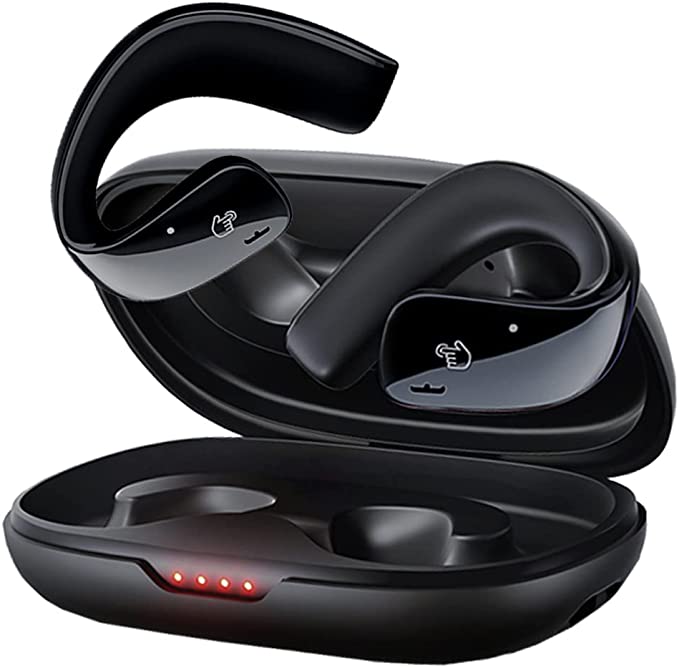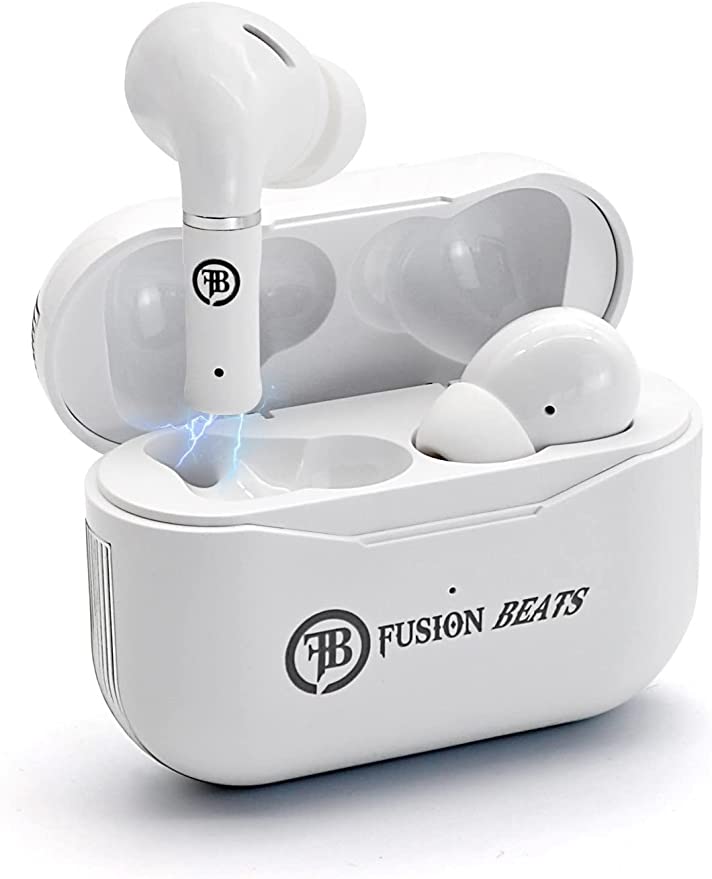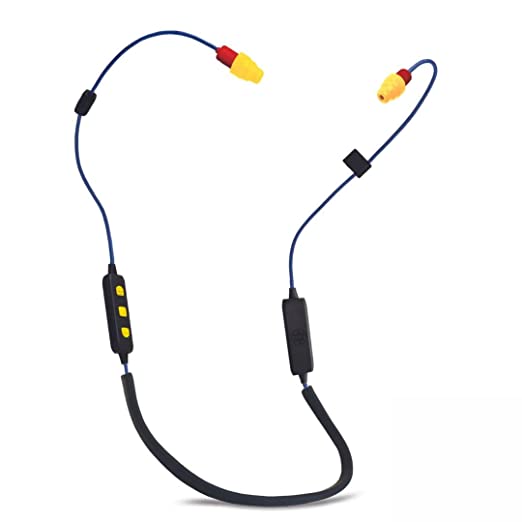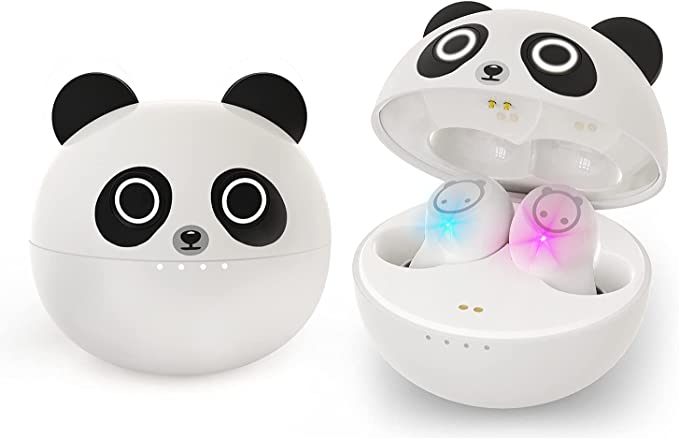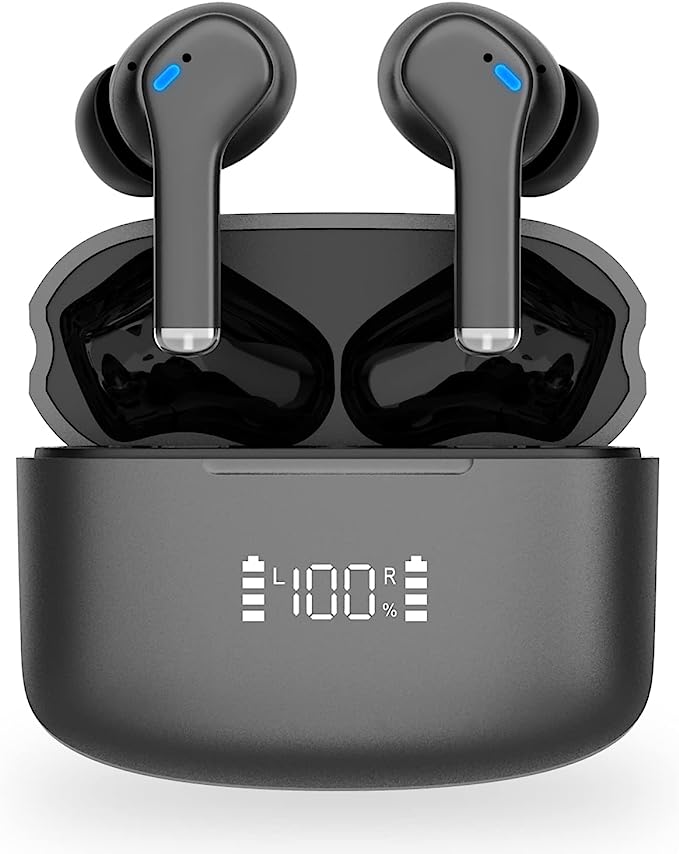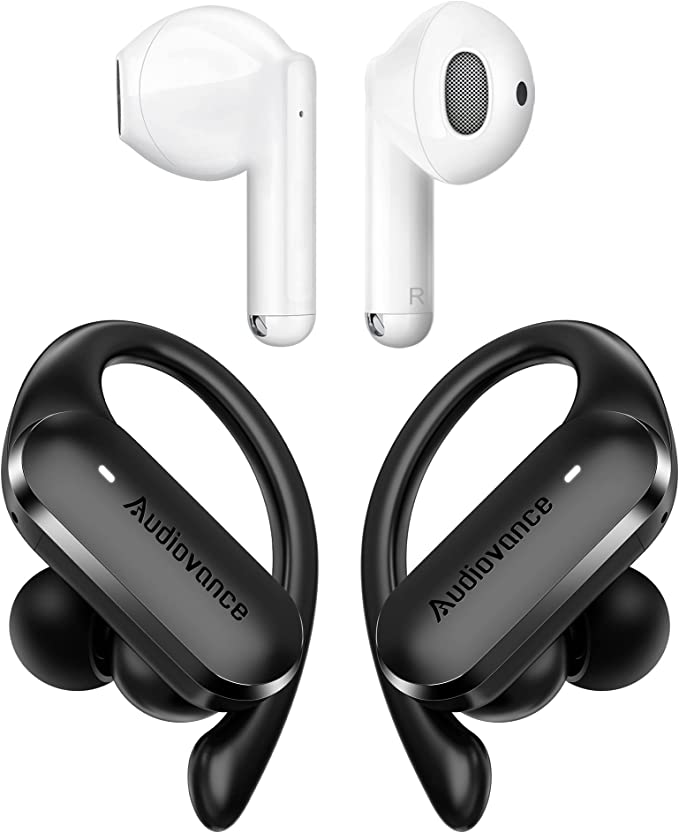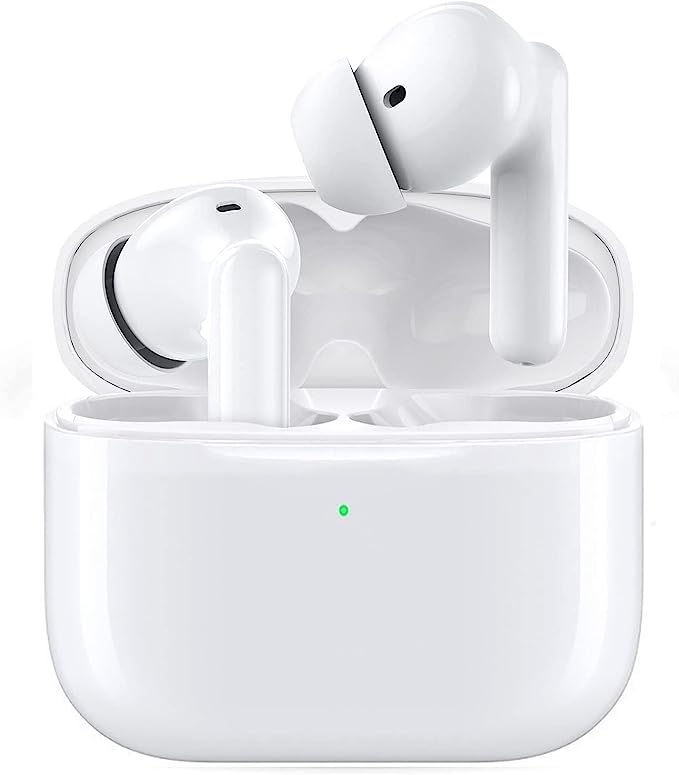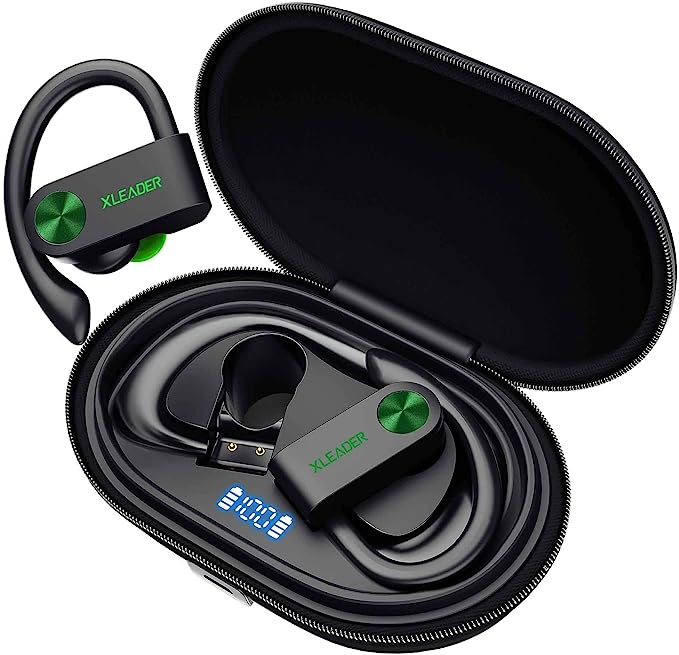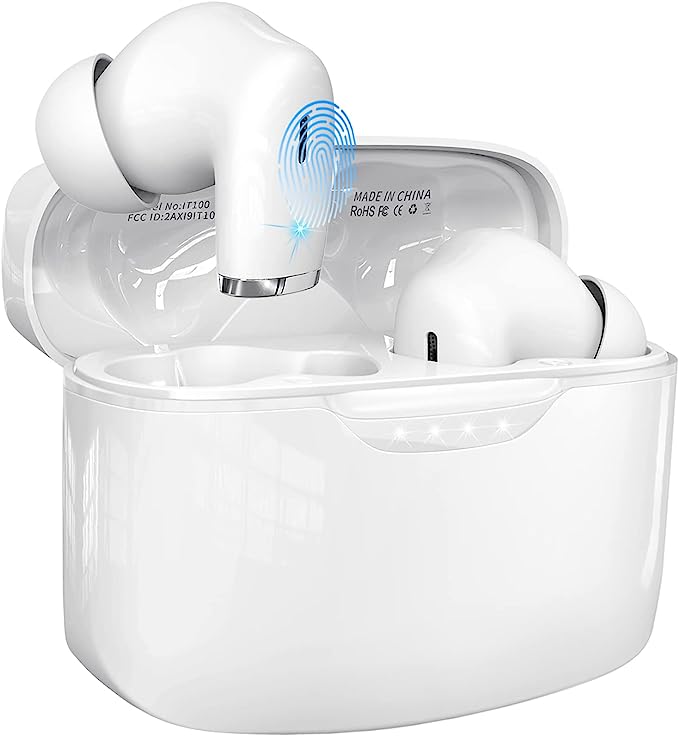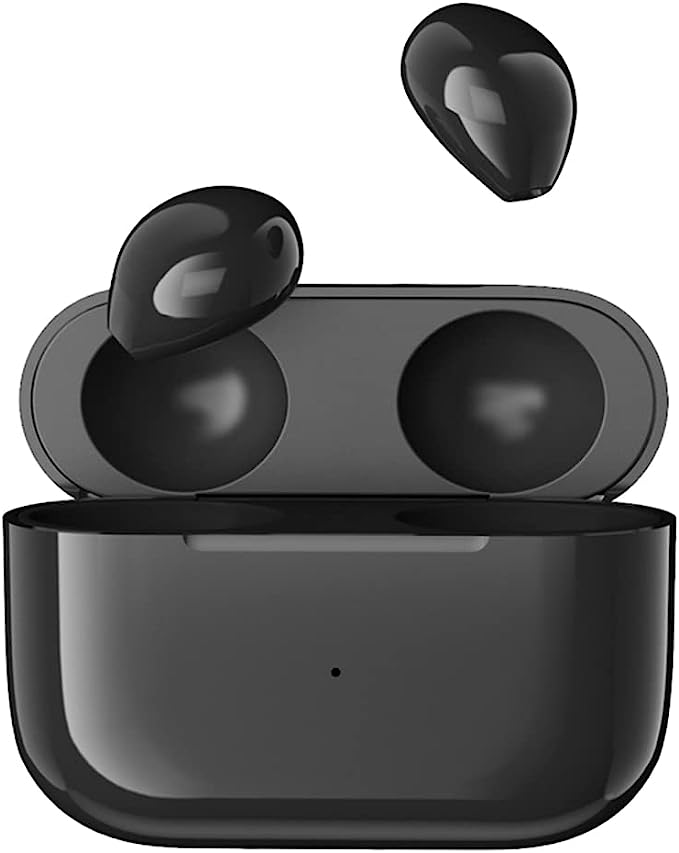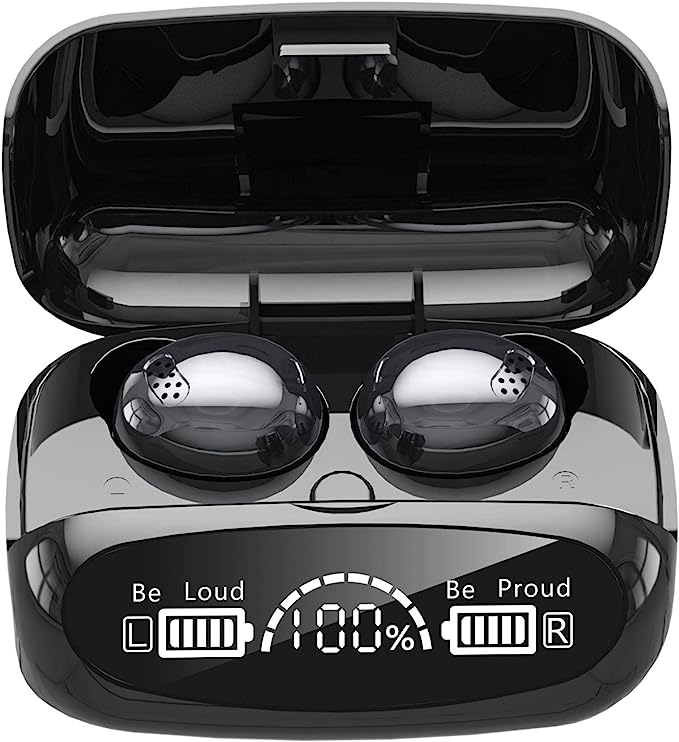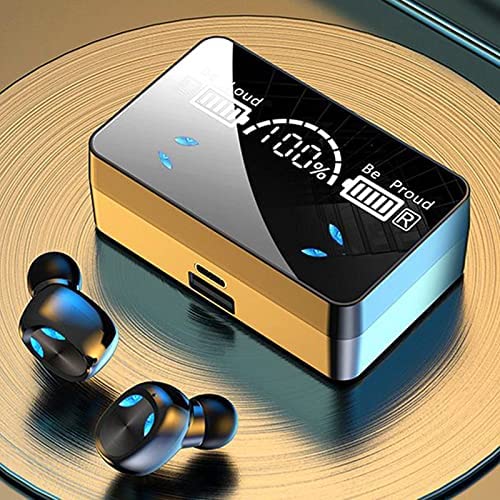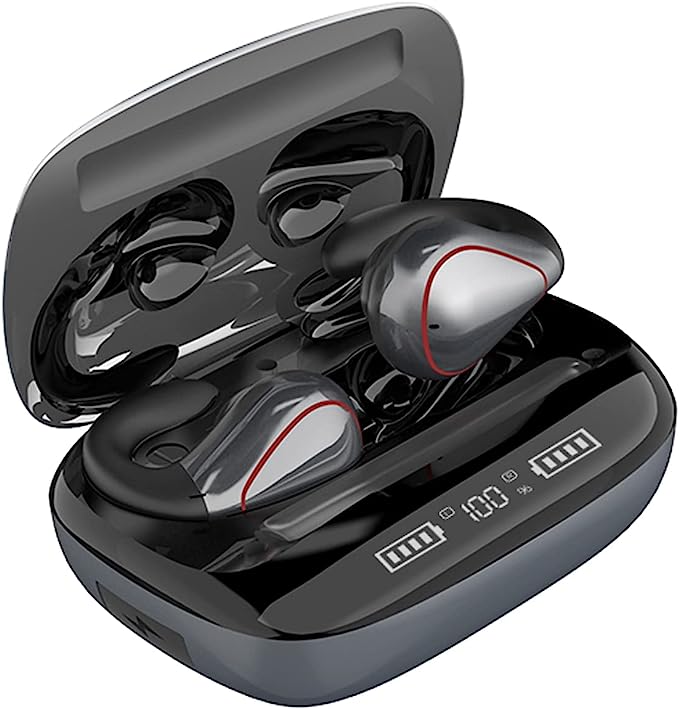Loluka Ear Clip Bone Conduction Headphones: Open-Ear Freedom for Active Lifestyles
Update on Feb. 8, 2025, 11:59 a.m.
Imagine you’re jogging down a busy street, lost in your favorite playlist. Suddenly, a car horn blares, and you narrowly avoid a collision. Or perhaps you’re working from home, constantly taking your earbuds out to hear your family. These common frustrations highlight the limitations of traditional in-ear headphones: they isolate you from the world around you. But what if you could enjoy your audio and stay connected to your surroundings? That’s the promise of bone conduction technology.

A Different Way to Hear: The Magic of Bone Conduction
Bone conduction might sound like something out of science fiction, but it’s a surprisingly simple and natural way to experience sound. Instead of sending sound waves through the air to your eardrums, bone conduction uses vibrations transmitted through the bones of your skull directly to your inner ear, the cochlea. Think of it like this: when you chew crunchy food, you hear the sound loudly in your head, even though others around you might not. That’s bone conduction in action!
A Journey Through Time: From Whispering Rods to Wireless Wonders
The concept of using vibrations to transmit sound isn’t new. Long before the invention of electronic devices, people experimented with ways to bypass the traditional hearing pathway. In the 16th century, Girolamo Capivaccio, an Italian physician, reportedly used a metal rod held between the teeth to help diagnose hearing problems. Patients would bite down on the rod, and Capivaccio would strike it, observing how the vibrations were perceived. This rudimentary technique, while far from perfect, laid the groundwork for future innovations. The development of bone conduction technology continued through the 19th and 20th centuries, with applications primarily in hearing aids and specialized communication devices for the military and divers.
The Science of Sound: Air vs. Bone
To truly understand bone conduction, let’s first revisit how traditional hearing works. When you hear a sound, it’s because sound waves – vibrations in the air – travel through your ear canal and cause your eardrum to vibrate. These vibrations are then amplified by tiny bones in your middle ear and transmitted to the cochlea, a snail-shaped organ filled with fluid and tiny hair cells. These hair cells convert the vibrations into electrical signals that your brain interprets as sound.
Bone conduction takes a different route. Instead of relying on air to transmit the sound waves, it uses transducers to convert electrical signals into mechanical vibrations. These transducers are placed against the bones of your skull, usually near your temples or cheekbones. When the transducers vibrate, they cause the bones of your skull to vibrate as well. These vibrations travel directly to the cochlea, bypassing the eardrum and middle ear. Crucially, the cochlea doesn’t distinguish how the vibrations arrived – whether through air or bone – it simply processes them into electrical signals that your brain interprets as sound. It is similar to an antenna that receives a signal. It does not care much about whether it receives it via cable or air. It just receives it.

Delving Deeper: The Nuances of Bone Conduction
Not all bone conduction is created equal. There are different types of transducers used to generate the vibrations, each with its own advantages and disadvantages.
-
Moving-Coil Transducers: These are similar to the drivers found in traditional headphones, but instead of moving a diaphragm to create sound waves in the air, they vibrate a small plate that’s in contact with the skull. They tend to be larger and heavier but can often produce a wider frequency response.
-
Piezoelectric Transducers: These use a special type of ceramic material that changes shape when an electrical voltage is applied. This change in shape creates the vibrations. Piezoelectric transducers are typically smaller and lighter than moving-coil transducers, making them ideal for compact headphones, but they may have a more limited frequency response.
Beyond the transducers, there’s also the fascinating field of psychoacoustics to consider. This is the study of how we perceive sound, and it turns out that our brains process sound differently depending on whether it arrives via air conduction or bone conduction. For example, bone-conducted sound is often perceived as being “inside your head,” while air-conducted sound is typically localized to a specific point in space. Also, the perceived loudness and timbre (tone quality) of a sound can be different depending on the conduction path.
And, it’s important to be realistic about the limitations of bone conduction. Because the vibrations are transmitted through the skull, some sound inevitably leaks out into the surrounding environment. At higher volumes, this sound leakage can be noticeable to others nearby. Additionally, bone conduction headphones generally don’t provide the same level of bass response or overall fidelity as high-quality in-ear or over-ear headphones. This is because it’s more challenging to efficiently transmit low-frequency vibrations through bone.
Loluka Ear Clip Headphones: Bringing Bone Conduction to Life
The Loluka Ear Clip Headphones offer a practical and accessible way to experience the benefits of bone conduction. Let’s explore how their features relate to the science we’ve discussed:
Open-Ear Design: Safety and Situational Awareness
The defining feature of the Loluka headphones is their open-ear design. By leaving your ear canals completely unobstructed, you can hear ambient sounds – traffic, conversations, warning signals – alongside your audio. This is particularly important for outdoor activities like running, cycling, or walking, where situational awareness is crucial for safety. It’s also beneficial in office environments or at home, allowing you to stay connected to your surroundings while still enjoying music or podcasts.
Ear Clip Form Factor: Comfort and Stability
The ear clip design addresses a common complaint about traditional earbuds: discomfort and instability. The clips gently but securely hold the transducers against your cheekbones, eliminating the pressure and potential for slippage that often comes with in-ear buds. This design is particularly well-suited for extended wear and active use.
Bluetooth 5.0: Wireless Freedom and Reliability
The Loluka headphones utilize Bluetooth 5.0, the latest version of this ubiquitous wireless technology. Bluetooth 5.0 offers several advantages over previous versions, including improved connection stability, lower power consumption (which translates to longer battery life), and a wider range. This means you can enjoy your audio without dropouts or interruptions, and your headphones will last longer on a single charge.

Touch Controls: Intuitive and Convenient
Instead of fumbling with tiny buttons, the Loluka headphones feature touch-sensitive controls. These controls use capacitive sensors, similar to those found in smartphone touchscreens. A light tap or swipe on the surface of the earbud allows you to play/pause music, adjust volume, answer calls, and even activate voice assistants. This hands-free control is particularly convenient when you’re on the move.
Waterproof Design: Protection from the Elements
The waterproof rating of the Loluka headphones means you don’t have to worry about sweat or rain damaging the electronics. This is essential for anyone who plans to use them during workouts or in outdoor environments. While the specific waterproof rating (e.g., IPX rating) isn’t provided in the product information, the “waterproof” designation suggests a significant level of protection. It is important to seek for the IPX clarification before intensive water activities.

Beyond Sports: Bone Conduction in Everyday Life
While bone conduction headphones are often marketed to athletes, their benefits extend far beyond the realm of sports. They can be a great option for:
- Office workers: Stay aware of colleagues and phone calls while listening to background music.
- Commuters: Hear traffic and announcements while enjoying podcasts or audiobooks.
- Parents: Listen to music or audiobooks while still being able to hear their children.
- Individuals with certain types of hearing loss: Bone conduction can be an effective alternative for people who have problems with their outer or middle ear.
Hearing Health: A Responsible Approach
While bone conduction is generally considered safe, it’s important to be mindful of your hearing health. Just like with any type of headphone, listening at excessively high volumes for extended periods can potentially damage your hearing, even with bone conduction. The advantage of bone conduction, however, is that it may be less likely to cause damage than traditional headphones when used at moderate volumes, as it bypasses the eardrum.
The Future of Sound: Beyond Bone Conduction
Bone conduction technology is constantly evolving. Researchers are exploring new materials and designs to improve sound quality, reduce sound leakage, and enhance comfort. Some potential future applications include:
- Underwater communication: Bone conduction is already used by divers, and further advancements could lead to more sophisticated underwater communication systems.
- Augmented reality: Bone conduction could be used to deliver audio cues and information in augmented reality applications, leaving the user’s ears open to the real world.
- Medical diagnostics: Bone conduction testing is already used to diagnose certain types of hearing loss, and further research could lead to new diagnostic tools.
- Improved hearing aids: Bone conduction hearing aids are already available, and future advancements could make them even smaller, more comfortable, and more effective.
A New Way to Listen
Bone conduction technology offers a unique and compelling alternative to traditional headphones, opening up a world of possibilities for how we experience sound. The Loluka Ear Clip Headphones provide a practical and affordable way to explore these possibilities, allowing you to stay connected to your audio and the world around you. By understanding the science behind bone conduction, you can appreciate the ingenuity of this technology and make informed choices about your listening experience. It’s not just about hearing sound; it’s about hearing sound differently.

Feature: Long Battery Life
While not directly stated, “Long Endurance” is a main feature.
Although the Loluka Ear Clip Headphones boast “Long Endurance,” the specific battery life in hours is unfortunately not provided in the available product information. This lack of precise data makes it difficult to quantitatively assess the battery performance. However, we can still explore the factors that contribute to extended battery life in wireless headphones and why it’s a valuable feature.
In general, the battery life of wireless headphones depends on several factors, including:
- Battery Capacity: Measured in milliampere-hours (mAh), this indicates the amount of electrical charge the battery can store. A higher mAh rating generally translates to longer battery life.
- Power Consumption of Components: The Bluetooth chip, amplifier, and transducers all consume power. More efficient components use less power, extending battery life. Bluetooth 5.0, as used in the Loluka headphones, is designed for lower power consumption compared to earlier Bluetooth versions.
- Usage Patterns: Listening volume, the type of audio being played (music vs. podcasts), and the use of features like active noise cancellation (not applicable to the Loluka headphones) all affect power consumption. Higher volumes and more demanding audio require more power.
- Transducer Type: Piezoelectric transducers will use less power than moving-coil.
The “Long Endurance” claim suggests that the Loluka headphones have been designed with a combination of a reasonably sized battery and power-efficient components. This is a significant benefit for users who want to enjoy their audio for extended periods without needing to constantly recharge. For example, someone might use the headphones for:
- A full day of work: Listening to music or podcasts during work hours, without worrying about the battery dying.
- Long workouts: Powering through extended runs, bike rides, or gym sessions.
- Travel: Enjoying audio on long flights or road trips without needing to find a power outlet.
While the absence of specific battery life figures is a drawback, the emphasis on “Long Endurance” suggests that it’s a key design priority for the Loluka headphones. Potential buyers should look for user reviews or additional product information that might provide more concrete details on battery performance.

